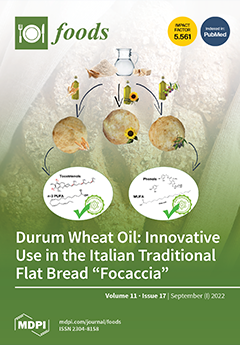Antrodia cinnamomea is a precious edible and medicinal mushroom with various biological activities, such as hepatoprotection, antitumor, antivirus, immunoregulation, and intestinal flora regulation. However, the wild fruiting bodies of
A. cinnamomea are scarce and expensive. Submerged fermentation based on spore inoculation has become
[...] Read more.
Antrodia cinnamomea is a precious edible and medicinal mushroom with various biological activities, such as hepatoprotection, antitumor, antivirus, immunoregulation, and intestinal flora regulation. However, the wild fruiting bodies of
A. cinnamomea are scarce and expensive. Submerged fermentation based on spore inoculation has become the most efficient and popular artificial culture method for
A. cinnamomea. In order to complement the mechanism of asexual sporulation of
A. cinnamomea in submerged fermentation, and provide a theoretical basis to further improve the sporulation, comparative transcriptomics analysis using RNA-seq and RT-qPCR were conducted on
A. cinnamomea mycelia cultured under different nutritional conditions to reveal the regulatory mechanism underlying the asexual sporulation induced by nutrient limitation. The obtained mechanism is as follows: under nitrogen starvation, the corresponding sensors transmit signals to genes, such as
areA and
tmpA, and promote their expression. Among these genes, AreA has a direct or indirect effect on
flbD and promotes its expression, further enhancing the expression of
brlA. Meanwhile, TmpA has a direct or indirect effect on
brlA and promotes its expression; under carbon starvation, transport protein Rco-3, as a glucose sensor, directly or indirectly transmits signals to
brlA and promotes its expression. BrlA promotes the expression of
abaA gene, which further enhances the expression of
wetA gene, and
wetA then directly leads to asexual sporulation and promotes spore maturation; meanwhile,
gulC can also promote cell autolysis, which provides energy and raw materials for sporulation.
Full article






